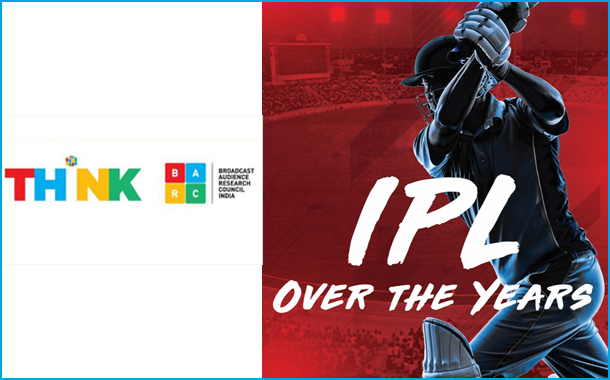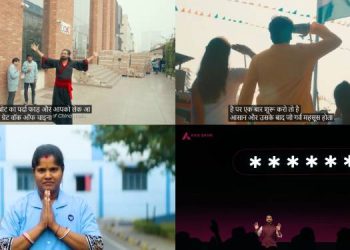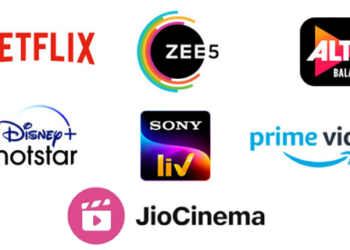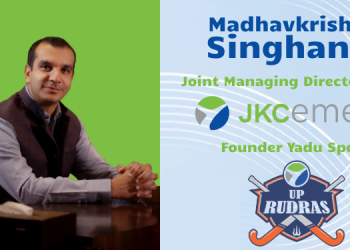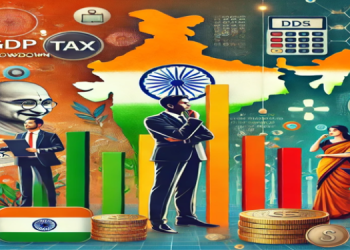Indian Premier League (IPL) is one of the biggest sporting properties in India. It is a format of worship in a country where Cricket is considered a religion. The BARC India has examinedthe evolution of IPL’s TV Viewership overthe past three years in detail.
The Analysis Considered Priamry and Regional language feeds of Sony Pictures Network Channels for IPL 2016 and IPL 2017. For IPL 2018, Star India’s Primary Sports Channels and Regional feeds were taken into consideration.
Overview
TV Impressions for IPL 2018 witnessed a growth of 41% over 2016 season, and grew at 16%in the 2018 edition over previous season.Beyond Impressions, Average Time Spent watching IPL matches too exhibits an upward trend. From an average of 28 minutes in 2016, it increased to 34 minutes in 2018.

Over the three years’ time the viewership has only grown consistently where it has grown by 22% in the year 2016 -2017 and further grown by 16% in 2018. The average time spend has is increased by 7% from the previous year. Clearly, IPL viewership continues to enjoy growth year on year, pointing to the fact that it remains a dynamic and much sought-after property on TV.
Analysing the evolution of the IPL audience over the 3 years BARC India has reported the event, like the demographic profile of IPL viewers, the data reports that male-female contribution to IPL has remained largely consistent, with a marginal increase in viewership share of female viewers in the 2018 edition.

During the last 2 years the share of male and female viewers has remained the same with 59% and 41% and the current year shows a subtle increase in the female viewership with just a percent difference.

It is also interesting to note that viewership share of NCCS CDE has dropped over the last 3 years, while viewership share of NCCS B has shown a growth.
Age group wise viewership of IPL
Over the last 3 years, viewership of each age group has registered significant growth, Kids (<15 yrs) have registered 52% growth, that of 15-21 yrs has grown 50%, while 22-30 yrs have shown 20% growth. Within age groups however, we observe changing patterns of relative contribution to the growing IPL viewership.

The viewers between the age group lesser the 15years have contributed to around 13% in the year 2016 and the contribution has only risen by a percent in the following years. There is only marginal differences in the rate of contribution in the age groups where the viewers of age group 15-21 years have shown a slight decline to 17% this year , the viewers of age group 22 to 30 years and 31 – 40 years have declined a little to 18% and 16% respectively. It is observed that the viewers of age group 41-50years and 51 to 60years have seen fluctuations in 2017 but has remained the same this year. the senior citizens interestingly contribute to 7% of the viewership of IPL.
Contribution of sports genre to Total TV
The report reveals that IPL continues to enjoy a huge share of overall sports viewership in India. While the 2016 edition of contributed to 22% of total sports viewership, that figure has almost doubled to 43% in 2018*The share of Sports viewership jumped 2 percentage points in 2016 when IPL was on, and that scale up has only risen further over the years.

It is noted that the sports genre has taken a leap to contribute the to the total TV viewership all the three years that are being considered for the survey, the contribution of sports genre has only risen by a percent that makes it to 9% of contribution this year.
Impact of IPL on TV Viewership
IPL telecast has also shown significant impact on viewing habits for other genres. The research further provides the viewership of various genres during IPL and non-IPL weeks, that throws light on the impact of theproperty on viewing habits.
The share of GEC genre declines marginally in all 3 years, as viewers tune in to IPL matches during prime-time when General Entertainment content otherwise rules the roost.

Across 2016 and 2017, growth in viewership of Movies genre is attributable to telecast of matches on SET Max. However, in 2018, with the IPL telecast moving primarily to Sports channels, we see a clear drop in viewership of Movies genre, and a marked increase in that of Sports genre.
GECs have been impacted negatively -3% with IPL in 2018 and the impact on movies genre has dropped to -1% against the previous years where it has been 3% and 2%. The News genre has recorded an impact of -2% in 2017 from nil impact in 2016 and has again remained steady with nil impact this year. The sports genre seems to be the most impacted genre due to IPL with 4% this year while it has been – 2% in 2016 and no impact in 2017. Other genres have been impacted 1% due to IPL.
IPL and growth in HD viewership
IPL telecast over the last three years has also exhibited a growing contribution of HD viewership. In the recent study titled “Understanding the HD Viewership Landscape” BARC India had shown how Sports genre performs relatively better on HD than SD – both in terms of share of Impressions as well as engagement. Also, HD has emerged as the preferred mode of viewing for Cricket.This is reflected in this analysis of IPL viewership data as well.
Certainly, this is also driven by availability of IPL on more HD channels, higher uptake of HD subscriptions, as well as rising penetration of HD TV sets. One corollary indicator is rise in viewership share of NCCS A audience in 2018: possibly, growth of HD viewership is being driven by affluent audiences seeking a better viewing experience.

The share HD viewership has seen a rise to 3% against the previous years which has remained 1%.
Team Loyalty and viewership contribution by cities/ markets
Analysis of viewership contribution of specific cities/markets for home vs away teams throws up some interesting insights into impact of a team’s performance and of marquee players, as well as ‘connect’ between teams and their home cities/states.
At an all India level, games featuring Chennai Super Kings (CSK) and Mumbai Indians (MI) generated the highest viewership, while Rajasthan Royals (RR) garners the lowest.
**The analysis is basis IPL 2018 data
Chennai Super Kings emerge as a clear leader if we look at growth in viewership of “home-city/state” for matches featuring CSK versus those featuring other teams – clearly highlighting the strong connect between Dhoni’s team and Chennai/TN-Pondicherry: viewership from Chennai market grew 119% when CSK played. One strong factor for this is also the return of the team to IPL after a two-year hiatus.
CSK is one of the out-performing teams in IPL and has been consistently led by one of the most popular Indian cricket stars – MS Dhoni. Both factors add to the popularity of CSK games. The story is quite the reverse for teams like Rajasthan Royals and Delhi Daredevils – from the perspective of TV viewership of home cities/states. These two teams appear to be struggling to attract viewership oftheir natural fan base. This can partly be due to relatively weaker performance of the teams and their star players.
The Language Factor
IPL 2018 saw an uptake in viewership from Regional channels. Analysis of viewership share across multiple languages shows that while Hindi continues to dominate, there is a substantial viewership of telecast in Regional languages as well.
IPL 2018 generated almost equal viewership for English as well as Regional language (i.e., other than Hindi) As TV penetrates further into semi-urban and rural areas, and TV ownership grows at a faster pace in these town-classes, uptake of IPL (and possibly other sports properties) in regional language is likely to show a continued upward trend.

It is observed that Hindi contribute to 55% of the viewership share while regional languages and English contribute to almost equal share that makes to 23% and 22% of the pie respectively.
OOH Viewership
As per BARC India’s OOH measurement service, which tracks viewing across 900+ establishments in Mumbai, Delhi, and Bangalore, sports emerged as the most preferred genre (accounting for 70% ofthe total OOH viewership) during IPL 2018. Of the 44 mn walk-ins during April-May, a record 33 mn watched IPL in the OOH space.
IPL 2018 garnered 23.7 mn Impressions from OOH viewing of live matches across 3 cities, leading to an incremental viewership of 8% over viewership from TV currency panel.
TG: 15+ , Delhi/ Mumbai/ Bangalore
Advertising
As popularity of IPL as a TV property remains buoyant, so does the number of brands that seek higher visibility through this platform.

Over the last3 years, the total number of advertised brands has grown from 138 to 247 (a growth of 79%). The 247 brands that advertised on IPL 2018 were accounted for by 123 advertisers (count of which has grown50% since 2016). While part of this growth may be on account of increase in number of broadcasting channels, there is little doubt that IPL remains a favourite destination for brands.

If we look at spread of advertisers across channels that broadcast IPL, we see that a good 42% opted to be present across 10+ channels, while about 28% chose to advertise on a mix of 6-9 channels. The remaining advertisers were present on 5 or less channels.
The following tables look at top advertised categories over the last 3 IPLs.

Smartphones, Cellular Phone Services and Internet/Online Shopping categories remain the top 3 advertised categories during IPL telecast. The primary driving factor is that IPL sponsor brands fall under these categories. In 2018, we also saw a higher number of F&B categories in the top 10 advertised categories, and lesser durables. In 2016 and 17, categories related to automobiles/tyres, air conditioners and DTH service providers featured in the top10 (also by share of impressions). But in 2018, these categories have moved down in the ranks marginally. In their place, fast-moving F&B categories like Biscuits, Pan masala, and aerated soft drinks have not only found their way into top 10, but also improved their relative ranking.
Net take aways
- IPL as a TV property continues to grow – in terms of viewership and engagement with audience.
- IPL viewership has a male skew, but share of female viewership has marginally risen in 2018.
- Young audiences (22-40 years) is major contributor to IPL viewership.
- IPL drives up sports viewership, and simultaneously impacts viewership of other genres like GEC.
- HD share of IPL viewership shows rising trend. This also highlights growing preference for Sports viewing on HD.
- Matches featuring CSK and MI remain the big draws on TV. Both these teams not only drive up viewership in their home cities/states, but also at all India level.
- IPL 2018 has witnessed huge uptake on regional language channels.
- Viewership share of regional-language telecast (23%) is at par with that of English language telecast (22%). Hindi dominates with 55%
- Smartphones, Cellular Phone Services and Internet/ Online Shopping are consistently the top 3 advertised categories on TV during IPL. This indicates that for marketers, IPL remains a platform to engage with young, affluent audiences.
- Out of Home viewing contributes to a sizeable share of total IPL viewership. Measurement across 3 metros ( Mumbai, Delhi & Bengaluru ) accounted for 8% incremental audiences over TV home panel.

